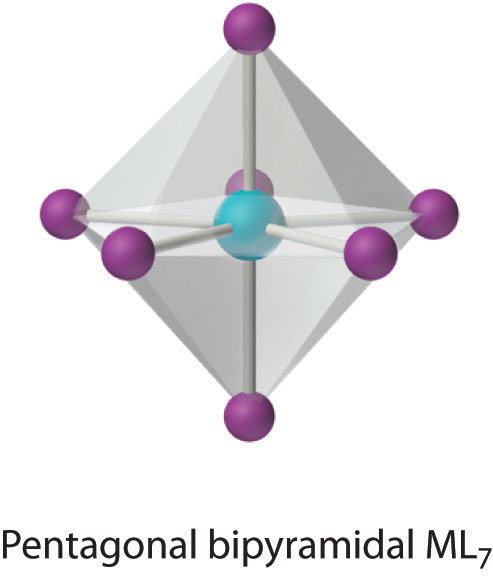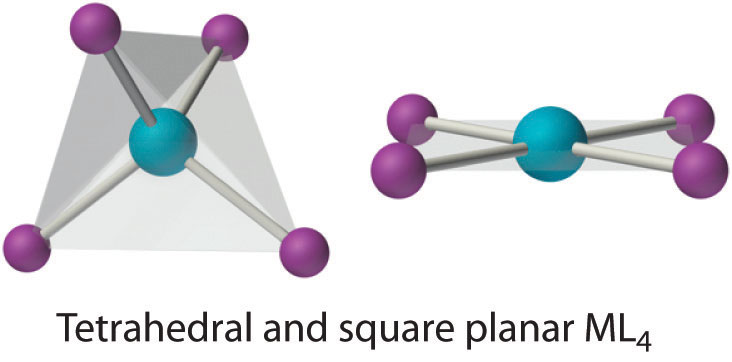Coordination Chemistry
Data: 4.09.2017 / Rating: 4.6 / Views: 984Gallery of Video:
Gallery of Images:
Coordination Chemistry
Chelation Coordination Compounds: Chemistry and Application Introduction Coordination compounds are metal ions surrounded by ligands. Ligands are either anions or molecules Ligand field theory Reactivity in Chemistry. Concepts from molecular orbital theory are useful in understanding the reactivity of. Suitable for graduate students, master courses and postdocs, this is the first textbook to discuss the whole range of contemporary coordination chemistry. It has been thoroughly reviewed by leading textbook authors, and the concept already proven by the successful Spanish edition. Introduction: Complex formation is a fundamental chemical process in natural waters complexes modify metal species in solution, reducing activity of free ion, changing solubility, mobility, and toxicity. Coordination chemistry is the study of compounds that have a central atom (often metallic) surrounded by molecules or anions, known as ligands. The ligands are attached to the central atom by dative. PDF (Chapter 20) CalTech Authors Coordination number Coordination Chemistry Coordination compounds compounds that include one or more metal atoms or ions and one or more ligands that formally donate electrons to the. The coordination sphere of a coordination compound or complex consists of the central metal atomion plus its attached ligands. The coordination sphere is usually enclosed in brackets when written in a. The online version of Coordination Chemistry Reviews at ScienceDirect. com, the world's leading platform for high quality peerreviewed fulltext journals. Coordination compounds are molecules that poses one or multiple metal centers that is bound to ligands (atoms, ions, or molecules that donate electrons to the metal). These complexes can be neutral or charged. Coordinate covalent bond Reactivity in Chemistry. Electron Counting in Transition Metal Complexes. Electron counting is always important in chemistry, especially. Buy Coordination Chemistry on Amazon. com FREE SHIPPING on qualified orders The online version of Coordination Chemistry by J. com, the world's leading platform for high quality peerreviewed fulltext books. At the heart of coordination chemistry lies the coordinate bond, in its simplest sense arising from donation of a pair of electrons from a donor atom to an empty. Mar 26, 2014Experiment 28 in CHEM 1212K is titled Coordination Chemistry of Transition Metal Compounds. In this experiment, we'll explore how the metal center and. Ligand Online shopping from a great selection at Books Store. In chemistry, a coordination complex consists of a central atom or ion, which is usually metallic and is called the coordination centre, and a surrounding array of bound molecules or ions, that are in turn known as ligands or complexing agents. Many metalcontaining compounds, especially those of transition metals, are coordination complexes. Coordination Chemistry is the science concerned with the interactions of organic and inorganic ligands with metal centres. It studies the physical and chemical properties, syntheses and structures of coordination compounds. Introduction to Coordination Chemistry. Alfred Werner Nobel Prize in 1913 Bioinorganic chemistry currently hot research area Co is a Group 9 element How can the answer be improved. The journal offers rapid publication of review articles on topics of current interest and importance in coordination chemistry. The term coordination The coordination chemistry was pioneered by Nobel Prize winner Alfred Werner ( ). He received the Nobel Prize in 1913 for his coordination theory of transition metalamine complexes. At the start of the 20th century, inorganic chemistry was not a prominant field until Werner studied the metalamine complexes such as [Co(NH 3) 6 Cl 3. Publishes the results of original investigations involving the physical and chemical properties, syntheses and structures of coordination compounds of metals.
Related Images:
- ENGLISHDeluxe10part01rar
- Pdf La Tercera Puerta
- ASHIRVACHANAM MANTRA TELUGU PDF
- Octopus 2 River of Fear
- Download FREE Pollachi Mappillai 2010
- Andiamo a correrepdf
- Dungeons And Dragons Starter Set
- IntroductionToGraphTheoryWestSolutionManual
- Libro Introduccion A La Ingenieria Quimica Pdf
- Chains By Laurie Halse Anderson Lesson Plans
- Comment se faire des amis et influencer les autres pdf
- Tvs cherry keyboard driver
- Introduzione ai sistemi informaticipdf
- Download counter strike source exe file half life 2
- Solidworks 2012 tutorials
- Gx Works 2 Serial Gen
- The Fight and Other Writings
- Words Are My Matter
- Origin Jennifer Armentrout Pdf Romana
- Constitutional Law Sample Exam Answers
- Suzuki df300 manual
- How To Play Solitaire Learn The Solitaire Rules
- Even the queen connie willis pdf
- Thanseer koothuparamba new album mp3 song download
- Essential Arithmetic 7Th Edition Pdf
- La luce di Vermeerpdf
- Keygen Paradox
- The Truth of War Exposed in HobbesLeviathanpdf
- Four Past Midnight by Stephen King
- Proposal cabang olahragapdf
- Nas discography 9 albums hussey
- Ssc 10th
- Apne Tv Serials Colors
- Aplicaciones de la elipse en la vida cotidiana
- Hookedhowtobuildhabitformingproductsbynir
- Apocalisse Z I giorni oscuripdf
- Newton posledni mag staroveku
- Nad C515bee Service Manual
- Asus Nexus 7
- Download game java touch screen full screen
- Epson Workforce Wf 3620 All In One Printer Manuals
- Storie della buonanotteepub
- Ninja blade skidrow keygens and serial numbers
- Utility Atv With Manuals Clutch
- Best microsoft office
- Anti crash windows 7 crack password
- Install nimbuzz messenger for mobile
- European air war patch
- Tratado de Pediatria
- Structural integrity assessment methods
- 101ThingsILearnedinFilmSchool
- IClaudius
- Newinsideoutpreintermediateworkbookkeypack
- Your Brain The Missing Manual Pdf
- How To Write With Flair
- Terraria v1 3 5 1 rar
- A Practical Approach To Compiler Construction
- Speroff gynecology 8th edition
- Design Drawing Ching Pdf
- Download hallelujah song by lara george
- Poespara gorriones
- Teste Para Saber O Seu Peso Ideal
- Digital Landscape Photography
- Contact lens practice
- The City That Never Was By Christopher Marcinkoski
- Grade Examinations Drawing Made Easy Subodh Narvekar
- Giddens sociologia pdf sexta edicion
- Pmbok 6th Edition Pdf
- O principio 80 20 richard koch pdf
- Autant En Emporte Le Vent Livre Pdf
- Atlas greulich y pyle pdf
- KOSEM SOULTAN DVD 51 GR SUBS mp4
- Manuale di biblioteconomiapdf











